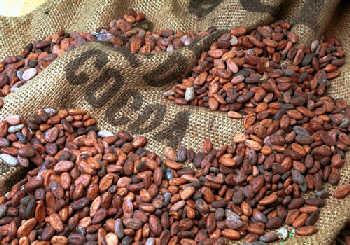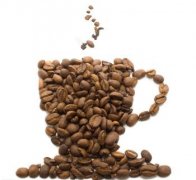General knowledge of roasting of coffee beans electrothermal baking technology

It was only at the end of the 19th century that "electricity" was used to drive the rollers of traditional drum dryers as well as blowers and cooling fans, but at that time it could not be effectively used as a source of heat for large-scale baking. Any chef knows that the rate at which electricity is converted into heat is much lower than that at which gas is converted into heat; in addition, the price of gas is much cheaper than electricity. From these two aspects alone, gas fire has always been the preferred heat source for bean baking machines in large bean baking factories or cafes.
However, at the beginning of the 20th century, there were many kinds of electric baking machines for small cafes, and today, electric baking heat sources have been widely used in various small-scale bean roasting devices.
Infrared and microwave baking science
The use of electromagnetic waves or radiation to bake coffee beans has been proved to be feasible in many ways.
Infrared is a kind of radiation, its wavelength is generally longer than visible light, but it is shorter than that of microwave. Infrared is mainly used in outdoor coffee bar heaters and household heating. Type heaters and other devices for similar purposes.
The first bean dryer to use infrared as a heat source was first introduced in the 1950s, and one of the leading companies in the US market, Diedrich, is a coffee shop roaster that specializes in infrared heat sources. The main structure of this kind of bean baking machine is very similar to the traditional drum baking machine, the heat source is also outside the baking drum, and there is also a blower blowing gentle hot gas into the baking drum, the only biggest difference is that the heat source is mainly the radiant heat produced by gas fire heating a ceramic plate, while the metal heat converter uses part of the radiant heat to heat the air that is about to be introduced into the baking drum. The host of the Divik bean roaster believes that this design can use energy more efficiently, the air pollution rate is lower, and the taste of roasted coffee beans is clearer (Clean).
Using microwave as a baking heat source is recognized as a very difficult technology, but now one day a genius has found a way to use microwave to bake coffee pockets! The first system in the world to use microwave to effectively bake coffee bags is called Microwave roasting (Wave Roast), which will probably be available when the revised edition of this book is published. this is a device designed to roast coffee beans on a small scale, mainly to make microwave ovens, a common household appliance in the United States, an additional use for roasting coffee beans. Please see the introduction on pages 168-170 of this book.
Endless baking: continuous roaster
For large baking companies, time is really equal to money. When roasting, the two procedures of unloading the roasted coffee beans and resurrecting the green beans are very time-consuming. Based on the economic factor of "time", another baking technology of the 20th century, the continuous roaster (Continuous Roaster), emerged. As long as this kind of roaster is not turned off, it will automatically repeat "feed bean-bake-lower bean-feed bean-bake bean-lower bean." The process.
In the construction of the continuous baking machine, the baking drum part of the traditional drum baking machine is elongated, and there was once a group of spiral blade parts. When the baking drum rotates, this screw-like blade transports coffee beans from one section of the baking drum to another in a slow, unidirectional stirring manner, with circulating hot air at the front of the baking drum and circulating cold air at the back. The travel time of coffee beans inside the baking drum is calculated, so as soon as the raw coffee beans enter the beans, they will first come into contact with the hot air area, and after the baking is completed, it will be transferred to the cold air area, and a roasting leak will stop here. Now there are many continuous roasters designed based on this principle, which are mainly used by large commercial coffee bean roasting institutions. See the pictures and related instructions on page 58 of this book.
The principle of air flow baking is also applied to the design of continuous roaster. The hot air in these continuous roasters can both bake and stir a large number of coffee beans. as soon as the coffee beans are roasted, they can wither onto the cooling block, and the baking block can be roasted for the next batch without interruption.
After completing a batch of baking, the traditional bean roaster must wait for the fuselage to cool completely before baking the next batch. This machine is now collectively referred to as the "batch roaster" (Batch Roaster), which is used to distinguish it from the design of the continuous roaster. Most boutique roasters still choose to use this roaster to bake coffee beans, because if you simply bake a handful of Kenya coffee beans in the morning, a handful of Sumatran coffee beans at noon, and a batch of Italian concentrated formula beans in the afternoon, then using a continuous roaster is simply a cow knife for cutting chickens, which is not necessary. But for large commercial roasters, as long as they add a conveyor belt to a continuous roaster, they can continue to produce similar formula coffee beans, which is very much in line with the economic considerations of such companies.
Silver skin and baking smoke
Some baking technologies in the 19th and 20th centuries had little to do with taste and basic architecture, but instead focused on safety and environmental considerations.
The problem of silver skin produced by baking was first discussed. When raw coffee beans enter the baking machine, their surfaces more or less adhere to some of the innermost fine, dry skin, commonly known as "Silver Skin". Once baked, the silver skins detach from the surface of the coffee beans and are left outside the baking room with the flow of air, but they can also be dangerous, causing fires if they fall near the source of fire; in addition, flying silver skins are also quite disturbing.
As mentioned earlier, in the 19th century, exhaust fans were first used in bean dryers to blow hot air into the baking drum. The application later developed into a "Cyclone", a large, hollow, cylindrical object that is usually set at the back of the baking room. After the hot air is extracted from the baking room, it enters the position of the separator with the silver skin. At this time, the hot air rotates in the dust separator, and the silver skin falls here, removing the hot air from the silver skin and baking smoke to continue to transmit upward. On the other hand, the silver skin is sunk to the bottom of the dust separator and collected for easy cleaning.
In the 20th century, the persistent smell of smoke from baking and the pollution it might cause became the main topic of discussion. At this time, a "rear smoke burner" (Afterburner) and a "catalyst conversion device" (Catalytic Devices) are developed to effectively remove most of the pollution sources in the baking smoke, and the treated hot air will be recycled to the baking drum for reuse, thus reducing a small portion of fuel consumption.
Monitor bakers: by nose and eyes
The use of hand-stirred bean baking appliances has always been the mainstream in small-scale baking, and the construction of this kind of baking apparatus is nothing more than the Naples hand drum baking machine described by Eduardo Phillips in the first chapter.
Traditional bakers rely on visual observation (to see the change in the color of coffee beans), hearing (the popping sound of coffee beans), and sense of smell (different baking stable electricity produces different baking odors). They use a device called a "Trier" to check the coloring of roasted coffee beans, usually with a hole in the front of the roaster drum to hold the sample stick. By judging the external viewing chromaticity of sampled coffee beans to determine the time to stop baking, the process of judging chromaticity must be carried out under a fixed light source, and the roaster must have enough experience. The work of adjusting the temperature of the baking room must also rely on the tested work, we must find a set of general baking mode, and adjust the baking according to the flavor defects of some specific coffee beans.
For traditional roasters, they always hold a stereotyped view of coffee roasting, believing that roasting is an art that must be taught through experience, which is increasingly pure through memory blocks and various senses.
Important Notice :
前街咖啡 FrontStreet Coffee has moved to new addredd:
FrontStreet Coffee Address: 315,Donghua East Road,GuangZhou
Tel:020 38364473
- Prev

Innovative baking technology in the 20th century: the baking method using purely hot air flow
Innovative baking technology in the 20th century: pure use of hot air baking, of course, how could there be no innovative baking technology in this era of the twentieth century? In the middle of the twentieth century, there were two major milestones in the evolution from direct and indirect fire baking to hot air baking. In 1934, Garbeth Burns developed a machine called Thermalo
- Next

Coffee bean baking common sense science is quietly integrated into art
What people think is the most important sense of art and sensory judgment is gradually replaced by science and tools, in other words, the memories that people used to rely on in baking are gradually replaced by objective, collective data and charts. The evolution of baking described in the previous paragraph has been created by the invention of many tools and control instruments. The first is a very simple device that can
Related
- Beginners will see the "Coffee pull flower" guide!
- What is the difference between ice blog purified milk and ordinary milk coffee?
- Why is the Philippines the largest producer of crops in Liberia?
- For coffee extraction, should the fine powder be retained?
- How does extracted espresso fill pressed powder? How much strength does it take to press the powder?
- How to make jasmine cold extract coffee? Is the jasmine + latte good?
- Will this little toy really make the coffee taste better? How does Lily Drip affect coffee extraction?
- Will the action of slapping the filter cup also affect coffee extraction?
- What's the difference between powder-to-water ratio and powder-to-liquid ratio?
- What is the Ethiopian local species? What does it have to do with Heirloom native species?

